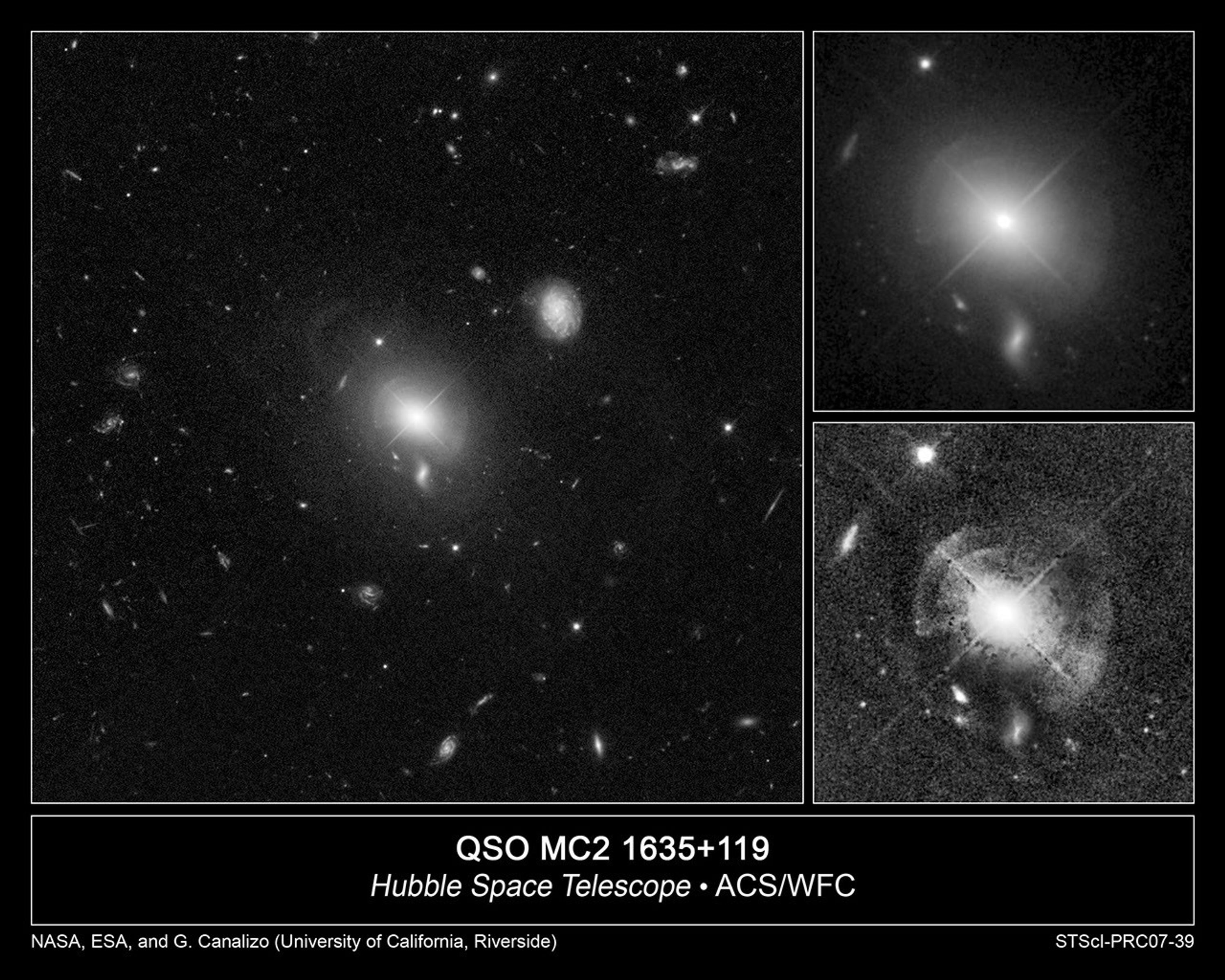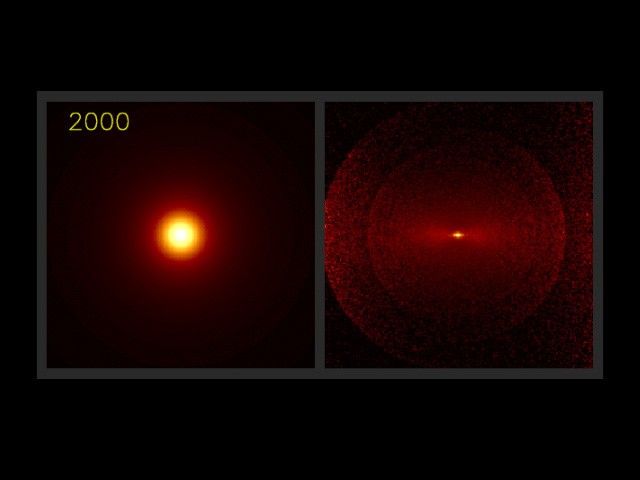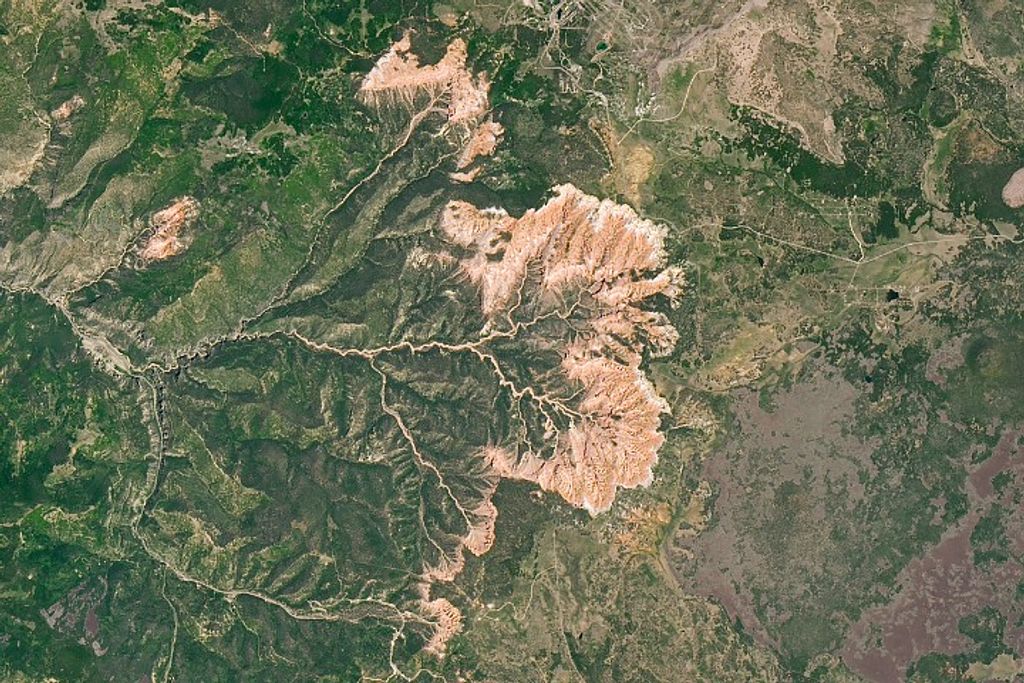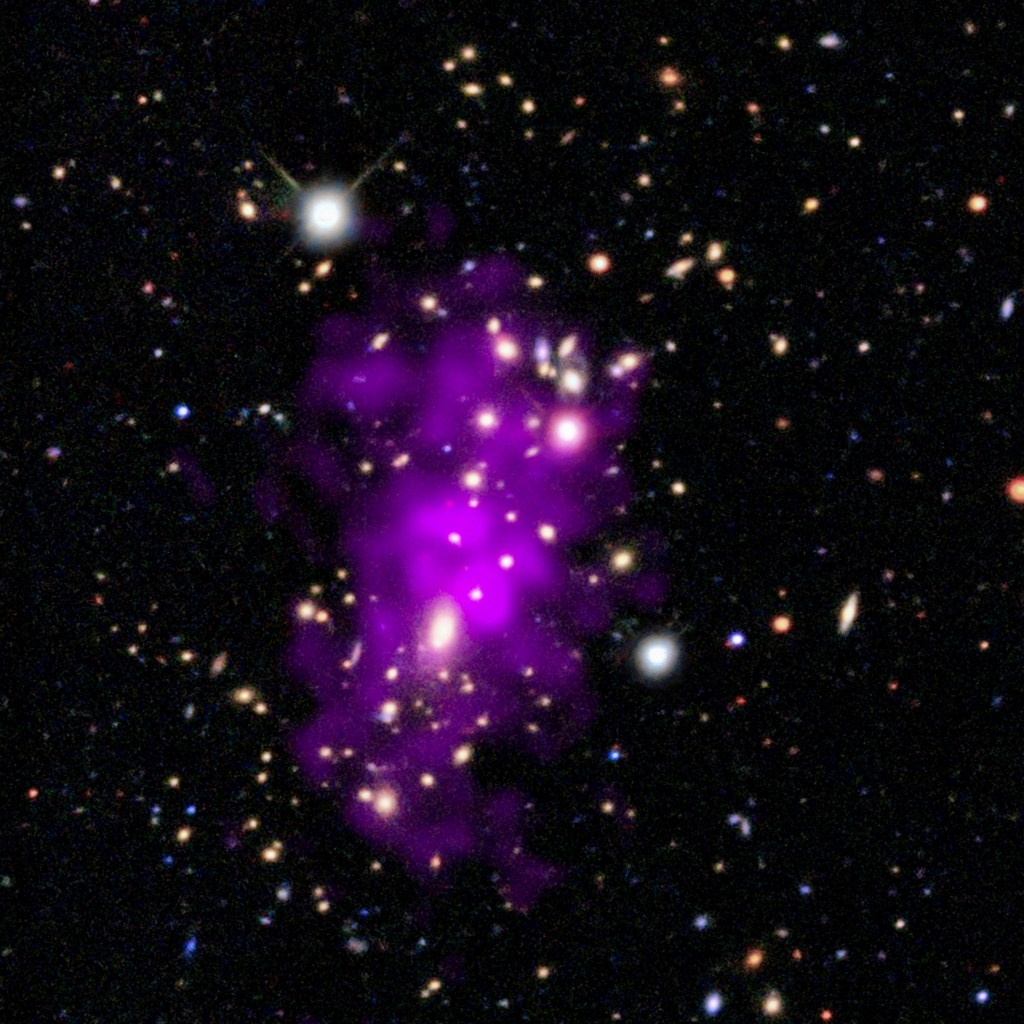1 min read
Quasar MC2 1635+119 and Host Galaxy

About the Object
- R.A. PositionR.A. PositionRight ascension – analogous to longitude – is one component of an object's position.16h 37m 46.5s
- Dec. PositionDec. PositionDeclination – analogous to latitude – is one component of an object's position.11° 49' 49.33"
- ConstellationConstellationOne of 88 recognized regions of the celestial sphere in which the object appears.Hercules
- DistanceDistanceThe physical distance from Earth to the astronomical object. Distances within our solar system are usually measured in Astronomical Units (AU). Distances between stars are usually measured in light-years. Interstellar distances can also be measured in parsecs.About 2 billion light-years away, Redshift: The object has a redshift, z = 0.146
- DimensionsDimensionsThe physical size of the object or the apparent angle it subtends on the sky.Roughly 1.2 arcminutes (600,000 light-years or 180 kiloparsecs) wide
About the Data
- Data DescriptionData DescriptionProposal: A description of the observations, their scientific justification, and the links to the data available in the science archive.
Science Team: The astronomers who planned the observations and analyzed the data. "PI" refers to the Principal Investigator.The Hubble image was created from HST data from proposal 10421 : G. Canalizo (University of California, Riverside), A. Stockton (Institute for Astronomy/University of Hawaii), M. Lacy (Spitzer Science Center/California Institute of Technology), and F. Schweizer (Carnegie Observatories/Carnegie Institution of Washington).
The science team comprises: G. Canalizo and N. Bennert (University of California, Riverside), B. Jungwiert (University of California, Riverside/Astronomical Institute, Academy of Sciences of the Czech Republic, Prague), A. Stockton (Institute for Astronomy /University of Hawaii), F. Schweizer (Carnegie Observatories/Carnegie Institution of Washington), M. Lacy (Spitzer Science Center/California Institute of Technology), and C. Peng (STScI).
- InstrumentInstrumentThe science instrument used to produce the data.HST>ACS/WFC
- Exposure DatesExposure DatesThe date(s) that the telescope made its observations and the total exposure time.June 28 and July 4, 2005, Exposure Time: 3.2 hours
- FiltersFiltersThe camera filters that were used in the science observations.F606W (V)
- Object NameObject NameA name or catalog number that astronomers use to identify an astronomical object.MC2 1635+119, MC2 1635+11.9
- Object DescriptionObject DescriptionThe type of astronomical object.Shell structure around a QSO (quasi-stellar object)
- Release DateOctober 25, 2007
- Science ReleaseHubble Spies Shells of Sparkling Stars Around Quasar
- Credit

Related Images & Videos

Shells of Stars Ring Quasar in Giant Elliptical Galaxy
These sharp images taken with NASA's Hubble Space Telescope reveal at least five shells of stars surrounding a brilliant quasar at the heart of a giant elliptical galaxy. The image at left shows the quasar, known as MC2 1635+119, and its host galaxy [center] against a backdrop...

Shell Formation in a Galaxy Merger
This simulation shows the formation of shells in a head-on collision of two elliptical galaxies of different masses. A giant galaxy weighing 300 billion solar masses [left panel] collides with a galaxy that is 10 times less massive, which is coming from the right. The panel at...
Share
Details
Claire Andreoli
NASA’s Goddard Space Flight Center
Greenbelt, Maryland
claire.andreoli@nasa.gov
































